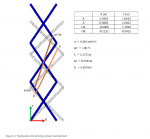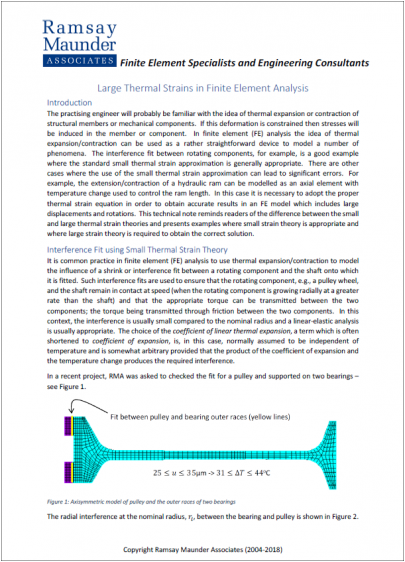Large Thermal Strains in FEA
Introduction
The practising engineer will probably be familiar with the idea of thermal expansion or contraction of structural members or mechanical components. If this deformation is constrained then stresses will be induced in the member or component. In finite element (FE) analysis the idea of thermal expansion/contraction can be used as a rather straightforward device to model a number of phenomena. The interference fit between rotating components, for example, is a good example where the standard small thermal strain approximation is generally appropriate. There are other cases where the use of the small thermal strain approximation can lead to significant errors. For example, the extension/contraction of a hydraulic ram can be modelled as an axial element with temperature change used to control the ram length. In this case it is necessary to adopt the proper thermal strain equation in order to obtain accurate results in an FE model which includes large displacements and rotations. This technical note reminds readers of the difference between the small and large thermal strain theories and presents examples where small strain theory is appropriate and where large strain theory is required to obtain the correct solution.
Author
Angus Ramsay
DOI: 10.13140/RG.2.2.22946.53447







